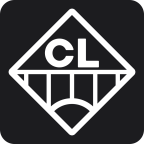Negative focus cutting is a key technology in laser cutting, particularly adept at processing medium thickness carbon steel. Its characteristic is to place the focus inside the workpiece, which broadens the cutting surface. The core advantage is that it ensures better cutting surface smoothness while improving cutting efficiency.

The difference between Positive,Zero and Negative-focus cutting
Application:
Negative-focus cutting is ideal for medium to thick stainless steel, carbon steel sheets due to its superior cutting speed and efficiency when utilizing high-power laser equipment.
Key Processing Parameters
Laser Power
Nozzle Diameter
Stand of Distance
Gas Pressure
Cutting Speed

The interplay between these parameters directly influences the quality and efficiency of the cut. Common practice prioritizes managing laser beam power, cutting velocity, and assist gas pressure due to their significant impact and ease of control.
1) Nozzle Parameter:
When cutting thicker materials, the selection of nozzle diameter becomes critical to effectively remove slag without compromising cut quality. Larger nozzles facilitate slag removal but may result in rougher surfaces.

Recommended nozzle parameters for 12kW-30kW fiber laser cutting of carbon steel
2) Laser Power
Laser power directly impacts cut depth and surface texture. Excessive power can cause excessive melting, resulting in incomplete penetration or a rougher texture with dragging striations.

3) Gas Pressure
Gas pressure significantly affects slag removal. Insufficient pressure can hinder slag removal, leading to poor cut quality. For instance, when cutting 30mm carbon steel with a 30kW laser, a gas pressure of approximately 1.8 bar is ideal.

4) Focus Position
The position of the focal point affects slag adhesion and cut quality. A too-small focus can cause severe slag buildup, whereas an excessively large focus may create a concave cut surface.

5) Cutting Speed
Increased cutting speed generally reduces slag buildup at the bottom of the cut, improving overall cut quality.

Recommended Negative-Focus Cutting Settings
Example 1: 30kW Cutting 25mm Carbon Steel
Cutting Speed: Start at the lower recommended limit.
Laser Power: Approximately 22,000W (avoid using maximum power initially).
Standoff Height: Begin with 1.8mm; gradually adjust upward to optimize the surface texture.
Focal Point: Typically set at half the material thickness, adjusting based on slag formation.
Nozzle Diameter: Single-layer nozzle, size 2.4mm or 3.0mm recommended.
- Tips to Reduce Surface Texture:
Increase cutting speed
Decrease gas pressure
l Increase focal point height
Adjust standoff distance incrementally
Example 2: 30kW Cutting 30mm Carbon Steel
Laser Power: Around 22,000W.
Focal Point: Set negative focus at -15mm (half the plate thickness). Adjusting focus toward positive reduces surface texture but may increase slag buildup. Conversely, adjusting further negative widens the cut, reducing slag but deepening texture.
General Approach:
Set initial cutting speed at the lower limit.
Use gas pressure around 1 bar for 10-40mm carbon steel.
Set standoff height between 1.8-2.0mm.
Adjust focal point based on actual cutting results and slag formation.
- Tips to Improve Surface:
Increase cutting speed
Reduce gas pressure
Raise focal point
Conclusion
Optimizing oxygen negative-focus cutting involves carefully balancing multiple parameters, including laser power, nozzle size, cutting speed, gas pressure, and focal position. Adhering to these guidelines ensures high-quality results, maximizing efficiency and surface finish in carbon steel cutting operations.














